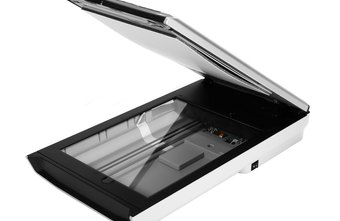A hard disk
drive (HDD), hard disk, hard drive or fixed disk is
an electromechanical data storage device that uses magnetic
storage to store and retrieve digital information using one or
more rigid rapidly rotating disks (platters) coated with magnetic material. The
platters are paired with magnetic heads, usually arranged on a
moving actuator arm, which read and write data to the platter
surfaces. Data is accessed in a random-access manner, meaning
that individual blocks of data can be stored or retrieved in any
order and not only sequentially. HDDs are a type of non-volatile
storage, retaining stored data even when powered off.
Improvement of HDD characteristics
|
|||
Parameter
|
Started with (1957)
|
Developed till (2017)
|
Improvement
|
Capacity
(formatted) |
3.75 megabytes
|
14 terabytes
|
3.73-million-to-one
|
Physical volume
|
68 cubic feet(1.9 m)
|
2.1 cubic
inches(34 cm)
|
56,000-to-one
|
Weight
|
2,000 pounds(910 kg)
|
2.2 ounces (62 g)
|
15,000-to-one
|
Average access time
|
approx. 600 milliseconds
|
2.5 ms to 10 ms; RW
RAM dependent
|
about
200-to-one |
Price
|
US$9,200 per megabyte
(1961)
|
US$0.032 per gigabyte by 2015
|
300-million-to-one
|
Data density
|
2,000 bits per square
inch
|
1.3 terabits per square inch in
2015
|
650-million-to-one
|
Rotation of Hard Disk
Platters
Rotational speed
[rpm] |
Average rotational latency
[ms] |
15,000
|
2
|
10,000
|
3
|
7,200
|
4.16
|
5,400
|
5.55
|
4,800
|
6.25
|
Hard Disk Type by
Interface
Parallel Advanced Technology
Attachment (PATA)
Serial ATA (SATA)
Small Computer System Interface
(SCSI)
Solid State Drives (SSD)
Parallel Advanced
Technology Attachment
These were the first types of
hard disk drives and they made use of the Parallel ATA interface standard to
connect to computers. These types of drives are the ones we refer to as
Integrated Drive Electronics (IDE) and Enhanced Integrated Drive Electronics
(EIDE) drives.
They make use of a 40 or 80 wire
ribbon cable transferring multiple bits of data simultaneously in parallel.
Serial ATA
These hard drives have replaced
the PATA drives in desktop and laptop computers. The main physical difference
between the two is the interface, although their method of connecting to a
computer is the same. Here are some advantages of SATA disk drives.
SATA drives can transfer data
faster than PATA types by using serial signalling technology.
SATA cables are thinner and more
flexible than PATA cables.
They have a 7-pin data
connection, with cable limit of 1 meter.
Disks do not share bandwidth
because there is only one disk drive allowed per SATA controller chip on the
computer motherboard.
They consume less power. They
only require 250 mV as opposed to 5V for PATA.
Small Computer System
Interface
These are quite similar to IDE
hard drives but they make use of the Small Computer System Interface to connect
to the computer. SCSI drives can be connected internally or externally. Devices
that are connected in a SCSI have to be terminated at the end. Here are some of
their advantages.
They are faster.
They are very reliable.
Good for 24/7 operations.
Have a better scalability and flexibility
in arrays.
Well-adapted for storing and
moving large amounts of data.
Solid State Drives (SSD)
These are the latest in drive
technology that we have in the computer industry. They are totally different
from the other drives in that they do not consist of moving parts. They also do
not store data using magnetism. Instead, they make use of flash memory
technology. They make use of integrated circuits or semiconductor devices to
store data permanently, at least until they are erased. Here are some of their
advantages.
Faster data access.
Less susceptible to shock.
Lower access times and latency.
Durability.
Less power usage.
Type of Hard Disk
An Internal Hard Drive
is the primary storage device located inside a computer system. It usually
contains pre-installed software applications, the operating system and other
files. Most desktop computers have several internal hard drives, allowing
them to provide greater data storage.
An External Hard Drive is a portable storage device that can be attached to
a computer through a USB or FireWire connection, or wirelessly. External
hard drives typically have high storage capacities and are often used to back
up computers or serve as a network drive.
Name
|
Types
|
DTR(Mbit/s)
|
DTR(MB/s)
|
SATA –
3
|
Internal
|
6000
|
600
|
SATA –
2
|
Internal
|
3000
|
300
|
SATA –
1
|
Internal
|
1500
|
150
|
PATA –
133
|
Internal
|
1064
|
133
|
FireWire
3200
|
External
|
3144
|
393
|
FireWire
800
|
External
|
786
|
98.25
|
FireWire
400
|
External
|
393
|
49.13
|
USB
3.0
|
External
|
5000
|
625
|
USB
2.0
|
External
|
480
|
60
|
Trouble
System cannot detect hard disk.
Shoot
Restore the BIOS settings to factory default settings.
Check if the interface cable
connecting the hard disk to the motherboard is connected properly.
Check, if the power connector is
properly connected to the hard disk.
Set the proper jumper setting if
multiple Hard Disks are present.
Connect the hard disk using a
different interface cable that you know is working.
Install the hard disk on
different system to check if it is working.
Trouble
A sound is coming from HDD
Shoot
Check whether the hard disk is mounted properly into the case. Tighten the
screws to hold the hard disk to the bay.
Remove all the connectors from
HDD and reconnect them properly.
If hard disk is new and make a noise,
then replace the hard disk.




0 comments:
Post a Comment